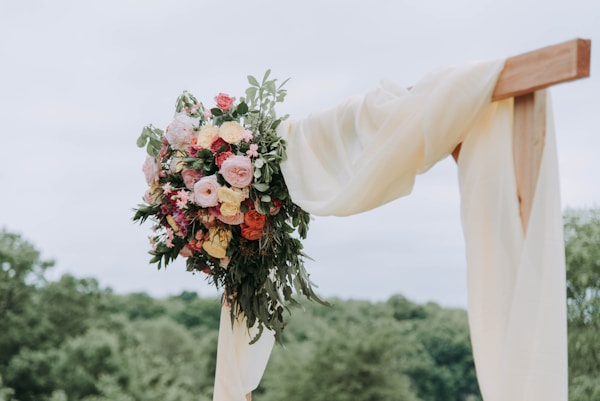How to Ensure a Comfortable Fit for Wedding Dresses Across Various Body Types
Understanding the Importance of Comfort in Wedding Dress Fitting
When it comes to weddings, the dress is often the centerpiece of the celebration. A wedding dress not only symbolizes the union between two people but also highlights the individuality of the bride. However, one question that frequently arises is how do you ensure a wedding dress fits comfortably over multiple body types? With diverse body shapes and sizes, finding a gown that flatters all forms can be a bit challenging. This article will delve into practical tips and strategies for ensuring comfort and style, catering to the needs of all brides.
The Significance of Comfort in Wedding Attire
Comfort is key, particularly on one of the most significant days of your life. Brides often have busy schedules filled with planning, events, and, ultimately, the wedding day itself. A gown that fits well allows for movement, ease, and confidence as you navigate through ceremonies, receptions, and dance floors. Here, we explore effective methods to ensure that Wedding dresses accommodate various body types while maintaining a chic look.
1. Understanding Body Types
Different body types require distinct approaches when it comes to fitting. Common body types include:
| Body Type | Description | Recommended Styles |
| A-line | Narrow at the top, wider at the bottom. | A-line dresses, empire waist gowns. |
| Hourglass | Curvy figure with balanced proportions. | Mermaid gowns, fitted silhouettes. |
| Rectangle | Similar measurements across bust, waist, and hips. | Fit-and-flare styles, belted gowns. |
| Pear | Narrow shoulders and wider hips. | Off-shoulder styles, A-line dresses. |
| Apple | Broader bust with a fuller midsection. | Empire waists, flowy materials. |
Understanding these different body types helps in selecting a dress that enhances each bride’s features while ensuring comfort.
2. Choosing the Right Fabric
The fabric of the wedding dress plays a significant role in its overall comfort. Consider fabrics such as:
- Chiffon: Lightweight and airy, allowing for ease of movement.
- Satin: Luxurious, with a smooth finish that drapes nicely.
- Lace: Offers texture without bulk, perfect for layering.
- Tulle: Adds volume without weight, great for ball gowns.
When these fabrics are chosen thoughtfully, they can adapt seamlessly to various body types, providing both style and comfort.
3. Custom Alterations: A Personal Touch
Even the most beautiful gown may require custom alterations for the perfect fit. Here are some alteration tips:
- Consult with a Professional: An experienced tailor understands how to modify a dress to enhance the bride's figure.
- Consider Maternity Needs: For brides-to-be, select styles that can accommodate a growing belly, like empire waists.
- Allow for Room: Ensure adjustments allow for movement; avoid overly tight or constricting fits.
Every bride has unique needs; hence, professional input is invaluable for the best results.
4. The Importance of a Good Bra
Supportive undergarments can be the unsung heroes of comfort. Investing in a high-quality bra tailored to your dress can improve the overall fit. Here are several options:
- Strapless Bras: Great for off-the-shoulder dresses.
- Corset: Offers ample support and can shape the waist.
- Seamless Options: Prevents lines and is ideal under fitted gowns.
A well-fitted bra not only boosts comfort but also enhances the overall silhouette of the dress.
5. Prioritizing Comfort During the Wedding Day
Comfort should not be compromised, even as you select your dream dress. Here’s how:
- Test Movement: During fittings, ensure that movement is not restricted when trying on dresses. Dance, sit, and walk to evaluate comfort.
- Consider the Weather: Choose appropriate fabrics and styles for the season—lighter materials for summer weddings and layers for colder months.
- Wear It for a While: Spend extended time in the gown during fittings to understand how it feels over hours.
6. Incorporating Accessories for Added Comfort and Style
Accessories can enhance comfort and style in various ways. Options include:
- Bridal Cloaks: Provide warmth while adding an elegant touch.
- Comfortable Footwear: Opt for stylish yet comfy shoes that offer ample support.
- Customized Veils: Ensure they are lightweight and easy to manage throughout the day.
Choosing the right accessories can make a significant difference in overall comfort and confidence.
Frequently Asked Questions
Q1: How long in advance should I start looking for a wedding dress?
A: It’s advisable to start your search at least 6-12 months before the wedding. This timeline allows for the selection of the perfect dress and ample time for alterations.
Q2: Should I consider a dress style based on my wedding theme?
A: Yes, aligning the dress style with your wedding theme enhances cohesion and visual appeal for you and your guests.
Q3: Is it okay to choose a dress that isn’t traditional?
A: Absolutely! Choosing a non-traditional dress style that reflects your personality can make the wedding feel more authentic.
Conclusion: Emphasizing Comfort in Your Wedding Dress Selection
The journey to finding the perfect wedding dress should prioritize comfort while accentuating your unique beauty. By taking into account individual body types, fabric choices, professional alterations, supportive undergarments, and practical accessories, brides of all types can feel confident and at ease on their special day. Remember, a dress that fits comfortably will allow you to focus on what truly matters—celebrating love and creating lifelong memories.
